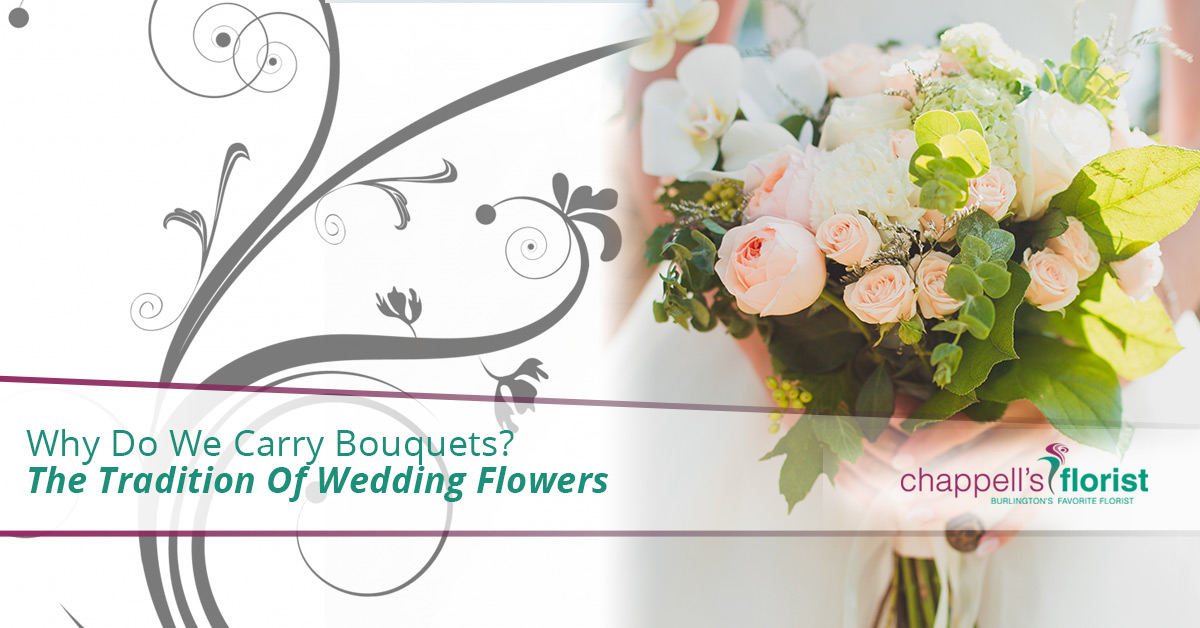Why Do We Carry Bouquets? The Tradition Of Wedding Flowers
10th Jul 2018

What is a wedding without flowers? These days, one of the primary parts of the planning process is choosing the right wedding flowers for your big day. It’s not just bouquets for the bridal party, and boutonnieres for the men, it’s also centerpieces, decorations for the ceremony area, and anywhere else you want to add some natural beauty. At this point, most of us simply assume that flowers will be needed for wedding bouquets, even if you don’t opt for any of the other arrangements. But where did that tradition come from?
A Centuries Old Tradition
The reason wedding flowers seem like a no-brainer is because the tradition of celebrating a marriage with flora goes back millennia, not just centuries. There is no clear origin for why wedding flowers became a thing, but ancient Greek, Roman, and Egyptian societies all included some sort of flora in their wedding rites. Often, brides would carry a sheaf of wheat for fertility. But that wasn’t enough on its own. They would frequently decorate their sheaves with branches from flowering fruit or nut trees to further symbolize fertility, as well as other wishes like happiness and good fortune.
Another tradition around this time was to weave garlands and crowns for the couple out of various flora. The Greeks would make these using olive branches, herbs, and flowers to symbolize different hopes for the marriage. Many of the herbs and flowers doubled as offerings to various gods and goddesses for protection and blessings on the union.
A Beautiful Fragrance
Wedding flowers weren’t always used for strictly religious reasons. If you know anything about the history of most European countries, you’ll know that bathing was often more a luxury than a daily habit. During the Middle Ages and after, especially for the commoners, flowers with particularly strong scents were used to mask other, less-pleasant smells. Wedding bouquets would frequently be made up of blooms with strong scents, plus fresh herbs to really help create a lovely aroma. In addition, brides would weave flowers into their hair or hang little pouches of potpourri hidden in their clothes.
After a few centuries of that, wedding flowers were a pretty firmly cemented tradition. Flowers as part of the wedding ceremony and reception started shifting from necessary to fun. For example, during the Elizabethan Age, many wedding receptions included a floral arrangement called a “kissing knot.” This was a round ball of blooms and greenery that would be hung over the bride’s and groom’s chairs and encouraged kissing — similar to the tradition of mistletoe at Christmas time.
Global Traditions
Europe isn’t the only part of the globe to use flowers to celebrate weddings. The uses and designs vary, but cultures around the world have found ways to include flora in their wedding celebrations. For example, in India, the bride and groom will drape each other in flower garlands and sit under a flower-bedecked pavilion, then be showered in flowers by the guests. In the Middle East, wedding bouquets include Artemisia, a bitter herb, to help ensure the couple will be able to survive the bitter times as well as the sweet.
Generally, the idea is to make a wedding celebration beautiful and meaningful to provide the couple with a great start to their new life together. Whether you’re embracing cultural traditions or making your own meaning, wedding flowers can and will add an extra level of celebration to your big day. Go local for the best in fresh flower wedding bouquets and flower arrangements for your celebration. Visit your local flower shop, Chappells Florist, located in Burlington, to start planning the perfect wedding flowers.

